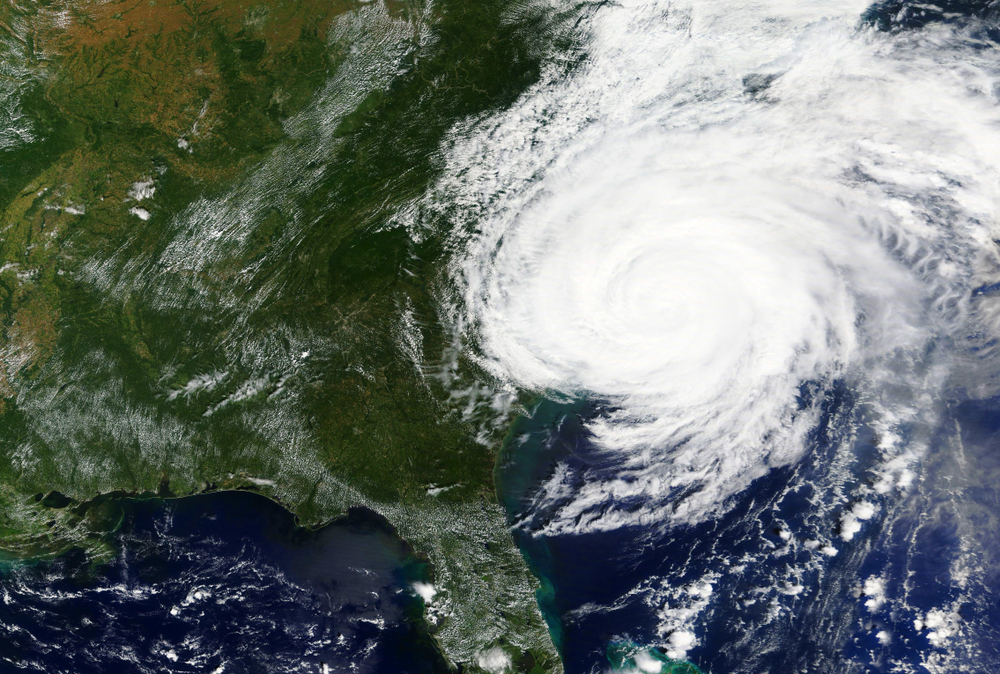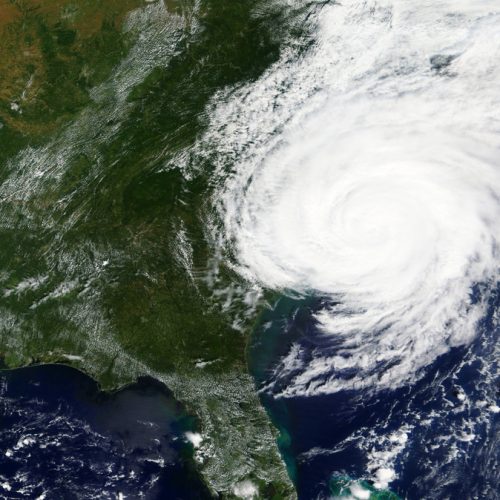As the weather has gotten warmer, my 4-year-old daughter recently asked me if we needed to be scared of hurricanes.
Growing up in New Jersey in the 90s, I can barely remember any big storms we needed to get ready for. My family now lives in Virginia, and moving further south does mean greater exposure to hurricanes. But it feels like now, every year, there is a hurricane threat that needs to be watched, all up and down the Easy Coast.
Last year saw the highest number of storms during the hurricane season, with an unprecedented 29 named storms. And according to the EPA, climate change, via warming ocean temperatures, can bring about more tropical cyclones that lead to hurricanes. So when my daughter asked me, I froze. Yes, it was likely we would face another hurricane threat this year. But how do I explain why, and is she old enough to handle talking about that?
Luckily for me, pediatrician Steph Lee, a spokesperson for the American Academy of Pediatrics, recently released tips on how to talk to your kids about climate change.

Don’t Avoid the Truth, But Leave Kids with Hope
For kids of all ages, Dr. Lee emphasized being hopeful, but not ignoring the realities on the ground. And that means pointing out the effects of climate change around you, like wildfires, hurricanes, and floods.
“A lot of time, related to news, kids actually hear more than we think they do,” Lee said in an interview. She recommends addressing news of major events head on, but then giving them a sense of what they can do.
“It’s always a good idea to prepare them with some sort of message of hope, with self-advocacy and that they can do something about it,” Dr. Lee explained. “Fear and anxiety comes from not knowing what’s going to happen, a feeling of loss of control…talking about why it happens, and saying next time here’s what we can do, helps them have more agency.”
For kids 5 and under, part of that agency is just learning to appreciate nature and understand how the climate and weather play a role in the world around us. To do that, Dr. Lee’s tips include taking nature walks and talking about how the weather affects the environment, including plants and animals.
Dr. Lee said the coronavirus pandemic played a role in releasing the recommendations now. That’s because the communities of color hit hardest by COVID-19 are disproportionately more likely to live in areas with a greater risk of climate disaster.
And if climate change is a controversial topic with your partner or other caretakers in your orbit, Lee recommends simply focusing on enjoying the outdoors.
“Just lay that ground work for appreciating the environment and how we live right now with nature and animals,” Lee said.
Read the full climate conversation tips from Dr. Lee and the American Academy of Pediatrics:
Toddlers and Children Under 5
- This a perfect time to introduce young children about the joys of nature. Parents may take walks to show how weather affects nature and marks the seasons. You can point out bird nests, for example, and talk about how weather influences when and where birds make their nests. Talk about other wild animals and discuss how they all have homes that need protecting.
- Young children also enjoy gardening. Pick out fruit, vegetable, or flower seeds to plant in your garden, or herbs to plant in kitchen boxes. Young children can help take care of plants, and get excited seeing something grow from nothing. Talk about how your child needs air to breathe and so do plants and animals. When pollutants get in the air, that affects their health.
- Point out local effects of climate change depending on your location. Some areas may be more prone to wildfires, hurricanes and floods, while others may experience longer and more intense heat waves or an increase in illness from mosquitoes and ticks.
School Age Children (6-12)
- Begin explaining concepts behind climate change in simple scientific terms. Ask what they know and fill in blanks or research it together. NASA has online resources to help parents go through each aspect of climate change.
- Discuss how personal choices can affect the environment and show respect for nature. Calculate your family’s carbon footprint together and ask them how they suggest lowering it. Examples include:
- Turn lights off after leaving the room.
- Try biking or walking, taking public transit or carpooling, when possible.
- Eat a more plant-based diet.
Explain how people – including kids – can be powerful forces in protecting the environment. Point out that choices we make can help make our planet, and people, healthier.
Teenagers (ages 13-18)
- Because teens are more aware of how issues may influence all aspects of their lives, you can discuss how climate change can affect our economy and society. This can spark scientific curiosity and introduce the idea of civic responsibility.
- Pick a recent or ongoing event and discuss how climate change might have contributed to the event and its economic effects. For example, families can talk with their teen about how climate change is causing longer and more severe wildfires in California, resulting in the loss of homes and businesses. Discuss how it is also causing air pollution that forces people indoors. Consider the mental health effects all of this can have on families.
- Families might also explore how climate change doesn’t affect everyone equally, and the ways some communities experience more health risks. Discuss how everyone should have an equal opportunity to clean air and water.
- Encourage your teen to come up with solutions and creative ways to express their ideas. They might use a science class presentation or a school, Scouts, 4-H or other project to educate peers about the need for climate change solutions. They could also form a club at school and brainstorm how to help the local community, write for a local or state newspaper on why teens care about the climate or join a national youth advocacy organization.
- Work together to make changes at home, incorporating your teen’s ideas. Participate in advocacy as a family and pace your discussions to help prevent stress and anxiety.

